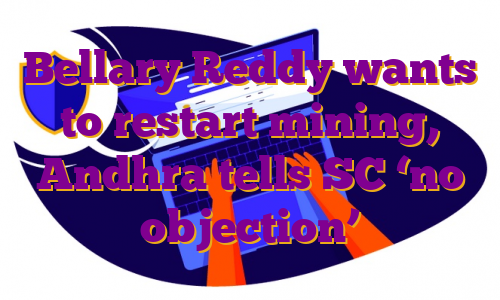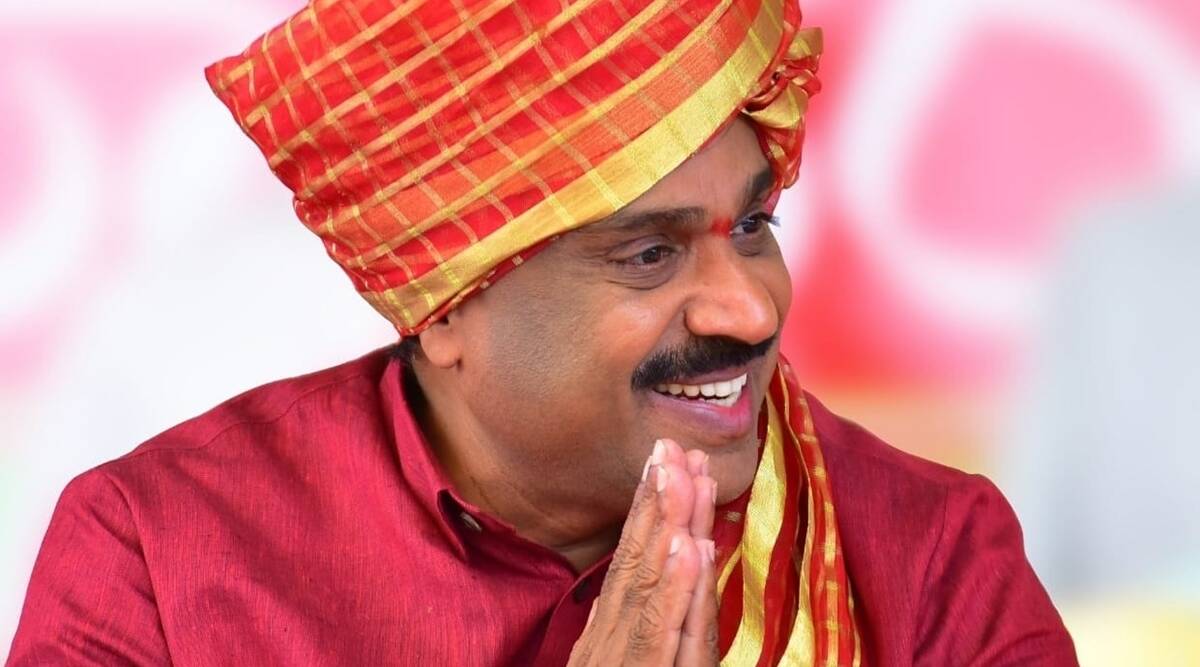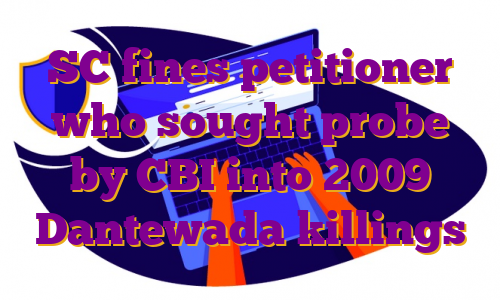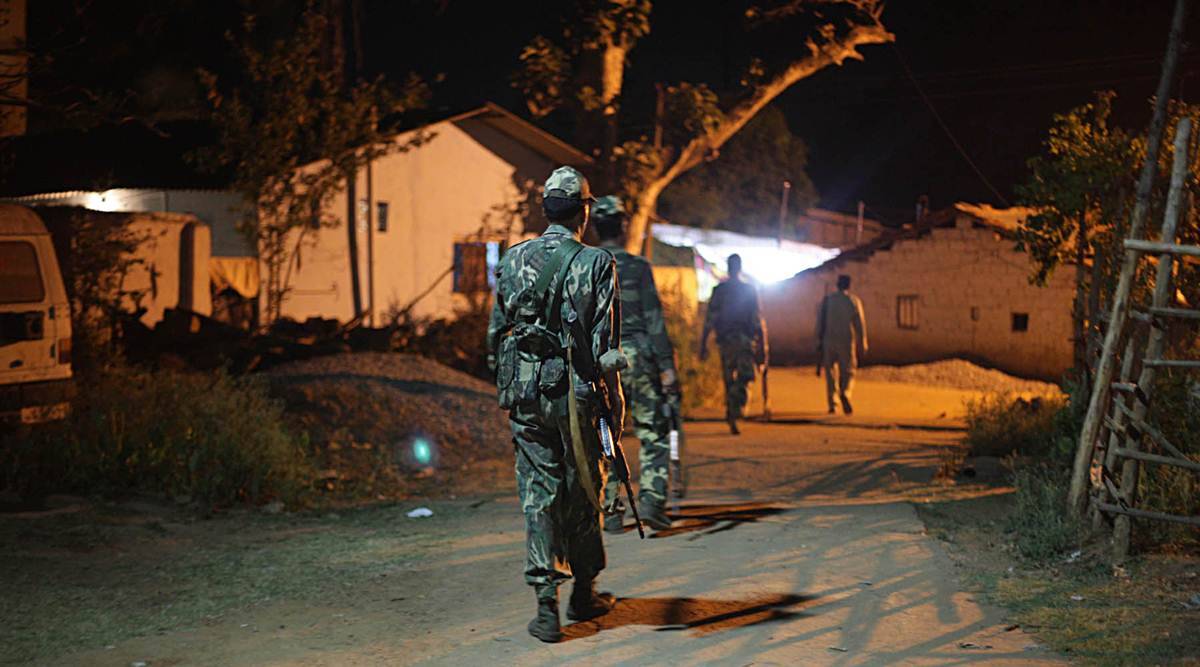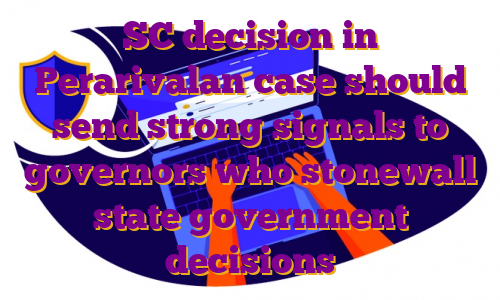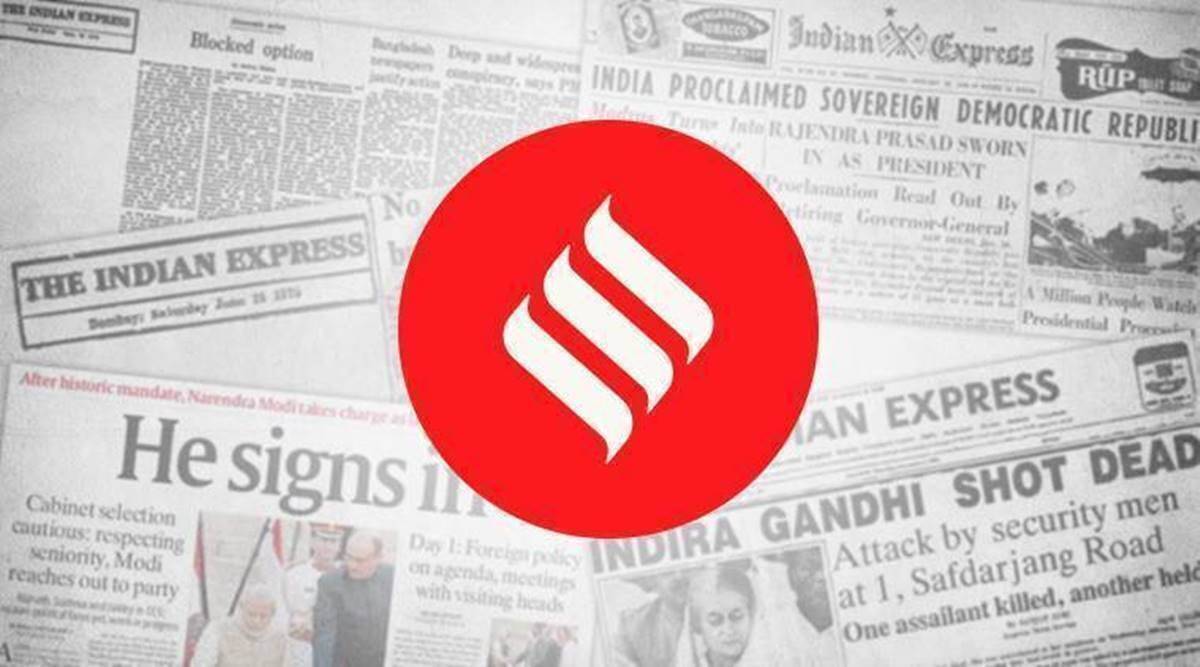The Andhra Pradesh government has told the Supreme Court it has no objection to resumption of iron ore mining in Bellary reserve forest where it was banned in 2010 over encroachment of forest land and other alleged violations, primarily by Obulapuram Mining Company (OMC) of former Karnataka minister G Janardhan Reddy.
Minister for Tourism and Infrastructure Development in the Karnataka government from 2008 to 2011, Reddy is under CBI investigation for alleged illegal extraction and money laundering.
The state made the submission to the Supreme Court after OMC sought the apex court’s permission to resume mining activities, claiming that “nothing further survives” in the case since the boundary dispute between Andhra Pradesh and Karnataka that had caused mining to stop was now resolved.
In March 2010, the SC stopped mining in Andhra’s Anantapur district until the mining leases were demarcated on the ground after its Central Empowered Committee (CEC) reported rampant encroachment and recommended that companies guilty of mining outside lease areas be allowed to resume mining and made to pay exemplary penalty.
Eleven years later, on July 21, the SC was informed that the two states had finally accepted the state boundary report of the Surveyor General of India. At the same hearing, as OMC claimed that this cleared the ground for restarting mining, the counsel appearing on behalf of Andhra Pradesh submitted, “on instructions, that the State has no objection to mining activities being carried out within its demarcated area.”
In January 2010, soon after Konijeti Rosaiah succeeded YS Rajasekhara Reddy as Chief Minister, the Andhra Pradesh government had told the SC that the Reddy brothers had in the Bellary forests illegally mined around 1.95 lakh tonnes of iron ores and that allowing them to continue would be a “premium on dishonesty”.
The SC is to hear the matter on August 10.
The apparent shift in the state’s stand has riled a number of officials who helped turn the tide against the Reddy brothers during 2009-2010.
“Since the permanent pillars and rocks marking the state boundary were removed to encroach on forest land, it was necessary to first determine the interstate line before demarcating individual leases, quantifying encroachments and fixing accountability. This is supposed to be the beginning (of that process) and not a closure,” said a forest officer who served in Anantapur district.
In fact, a second report submitted by the CEC in April 2011 underlined a long list of illegalities:
* None of the mining leases demarcated on the ground.
* Dumping on reserve forest land.
* Removal of boundary pillars to increase lease areas.
* Unlawful extension of mining leases by 12-17 years.
* Mining without forest clearance.
* Construction of illegal roads through the forest, including one into Karnataka apparently to smuggle iron ore across the border.
* Reported quantities of iron ore dispatched far exceeding the production capacity of the mines.
A senior official with the Andhra Pradesh mining department said multiple firms transported iron ore mined illegally in lease areas of Karnataka’s Bellary through forest roads to mines in neighbouring Anantapur district in Andhra Pradesh and then to one of the ports as legal consignments to be shipped out.
“The modus operandi was clear to us. Even the SC said that material extracted by at least two companies was routed through OMC and asked the CBI (in September 2011) to probe the links,” he said.
Instead of “resuming business as usual”, the official said, Andhra Pradesh should “broadly follow the course taken on the Karnataka side” of Bellary forests. “There, each lease was scrutinised before placing it in one of the three categories based on the extent of illegalities found. While the worst offenders were barred, others were allowed to resume mining after making amends and a production ceiling was set to prevent over-extraction,” he said.
Riding a boom in the global steel market, Janardhan Reddy, along with his brothers Karunakara Reddy and Somashekara Reddy, rose to prominence in Andhra Pradesh in the early 2000s. Of 188 hectares under iron mining lease in Bellary reserve forest in the state’s Anantapur district, 134 hectare was awarded to OMC.
Reddy’s OMC and Brahmani are among the companies being investigated by the CBI for alleged financial links with the businesses of YSR’s son and Andhra Pradesh chief minister Jagan Mohan Reddy. The Reddy brothers were ministers in the first BJP government in Karnataka during 2008-2011. In 2018, Somashekara Reddy and Karunakara Reddy were elected to the Assembly on BJP tickets.
.
SC fines petitioner who sought probe by CBI into 2009 Dantewada killings
IMPOSING A penalty of Rs 5 lakh on the main petitioner, the Supreme Court on Thursday rejected a petition seeking a CBI probe into alleged torture and extrajudicial killings by the Chhattisgarh Police and Central forces during anti-Maoist operations in Dantewada in 2009. The court said the investigation indicated that Maoists, and not the security forces, were responsible for the “alleged massacre”.
A bench of Justices A M Khanwilkar and J B Pardiwala said “the filing of charge sheets at the conclusion of the investigation into the various FIRs” lodged in connection with the alleged incidents “would indicate that the alleged massacre was at the end of the Naxalites (Maoists)”.
It said: “The materials collected in the form of the charge sheets substantiate the case put up by the respondents that the villagers were attacked and killed by the Naxalites. There is not an iota of material figuring in the investigation on the basis of which even a finger can be pointed towards the members of the police force.”
The court said: “…we have reached to the conclusion that no case, worth the name, has been made out by the writ petitioners for any further investigation, much less through an independent agency to be appointed by this Court”.
The bench imposed an “exemplary” cost of Rs 5 lakh on the main petitioner Himanshu Kumar to be submitted within four weeks failing which authorities can take appropriate steps for recovery. Kumar had told the court that he ran an NGO, Vanvasi Chetna Ashram, in Dantewada.
Pointing out that “prima facie… false information was given by the first informants to the police as regards the alleged massacre”, the court left it “to the State of Chhattisgarh/ CBI…to take appropriate steps in accordance with law…”
It said: “We clarify that it shall not be limited only to the offence under Section 211 of the IPC (false charge of offence made with intent to injure). A case of criminal conspiracy or any other offence under the IPC may also surface. We may not be understood of having expressed any final opinion on such action/ proceedings. We leave it to the better discretion of the State of Chhattisgarh/ CBI to act accordingly keeping in mind the seriousness of the entire issue.”
Referring to the petition, the bench expressed “surprise that the learned senior counsel appearing for the writ petitioners is absolutely oblivious of the fact that all the FIRs were investigated by the concerned investigating agencies and, at the end of the investigation, charge sheets came to be filed in different courts of the State of Chhattisgarh for the offences under the IPC like murder, dacoity, etc”.
The petition was filed on the alleged killing of 17 people in separate incidents in Dantewada on September 17 and October 1, 2009. Senior Advocate Colin Gonsalves had appeared for the petitioners — Kumar and family members of some of the local residents who were killed at the time.
The petitioners had alleged that Chhattisgarh Police, Special Police Officers (SPOs), activists of Salwa Judum (a vigilante group backed by the Chhattisgarh government) and paramilitary forces comprising CRPF and CoBRA Battalions were responsible for the alleged “brutal massacre”.
Acting on the Supreme Court’s direction, a District and Sessions Judge in Delhi had in 2010 recorded statements of the petitioners, other than Kumar, in the presence of an interpreter and Kumar.
Referring to them, the Supreme Court said “the statements of the petitioners Nos. 2 to 13 recorded before the Judicial Officer demolishes the entire case put up by the petitioner no.1 (Kumar)…”.
The judgement cited the statement of one of the petitioners, Soyam Rama, who said he “had run away from the spot” when the firing happened and “could not see as to who had opened fire” and that he “would not be in a position to identify” the assailants.
Pointing out that “all other statements of the rest of the writ petitioners are on the same line and footing”, the bench said “when we called upon Mr. Gonsalves to make us understand as to why his clients had to make such statements before the Judicial Officer, a very curious reply came from Mr. Gonsalves. According to Mr. Gonsalves, the entire mode and manner in which the statements were recorded by the Judicial Officer of the rank of District and Sessions Judge was absolutely incorrect.”
Newsletter | Click to get the day’s best explainers in your inbox
The bench said: “According to the learned senior counsel, specific questions ought to have been put by the Judicial Officer to each of the writ petitioners while recording their statements in accordance with the directions issued by this Court…”.
Referring to this, the Supreme Court bench said: “We are afraid, we are not in a position to accept such submission after a period of almost 12 years. The statements we are referring to recorded by the Judicial Officer are of the year 2010. Not once in the last 12 years any grievance has been made either orally or in writing before this Court as regards the mode and manner of recording of the statements. It is for the first time in 12 years that such a grievance has been made.”
In April, denying the allegations levelled by the petitioners, the Centre had urged the Supreme Court to direct a probe by a Central agency “to identify the individuals/ organisations who have been conspiring, abetting and facilitating filing of petitions premised on false and fabricated evidence…with a motive to either deter the security agencies to act against the Left Wing (Naxal) militia by imputing false charges on them or to screen off the Left Wing (Naxal) militia from being brought to justice by creating a false narrative of victimisation…”.
.
SC decision in Perarivalan case should send strong signals to governors who stonewall state government decisions
On Wednesday, a three-judge bench of the Supreme Court set free A G Perarivalan bringing a closure to the more than the three-decade-long battle waged by the 50-year old convict in the Rajiv Gandhi murder case. The relief provided by the Court was long overdue — Perarivalan’s prolonged incarceration was inhuman. But the verdict is also seminal for another reason: It clarifies constitutional issues that have resulted in numerous face-offs between state governments and governors in recent times, resulting in inordinate delays in policy implementation.
Perarivalan was sentenced to death by a TADA court in 1998, a verdict upheld by the SC a year later. In 2014, the SC commuted the sentence to life imprisonment. A year later, Perarivalan submitted a plea to the Tamil Nadu governor, seeking release under Article 161 of the Constitution. When this petition fell on deaf ears, he moved the SC which, in September 2018, put the ball back in the Raj Bhavan’s court. Days after this directive, the then AIADMK government of Tamil Nadu recommended the release of all the convicts in the Rajiv Gandhi assassination case. It would be another two-and-a-half years before the governor would forward the file to President Ram Nath Kovind. During this period, the governor was called out by the state high court as well as the SC for inaction. Now, the apex court has come down strongly again on the Raj Bhavan. On Wednesday, it ruled that the state government’s advice to the governor with respect to remission pleas under Article 161 is binding and there was no need to refer the matter to the President. The vacillation over Perarivalan’s petition was, therefore, “inexplicable,” and “inexcusable,” it held.
The verdict reaffirms a cardinal principle of the country’s polity: “The Governor occupies the position of the head of the executive in the State but it is virtually the Council of Ministers in each State that carries on the executive Government.” This should send a strong signal to governors in several states who have been stonewalling state government decisions. The recent friction between the two authorities in TN over the NEET exam is a case in point. In fact, according to a report in this newspaper, at least 20 bills or state government recommendations await the TN governor’s decision, as of March end. Raj Bhavans in West Bengal and Kerala too have collided frequently with governments over policy matters. The verdict should put an end to such bickering.
!function(f,b,e,v,n,t,s)
{if(f.fbq)return;n=f.fbq=function(){n.callMethod?
n.callMethod.apply(n,arguments):n.queue.push(arguments)};
if(!f._fbq)f._fbq=n;n.push=n;n.loaded=!0;n.version=’2.0′;
n.queue=[];t=b.createElement(e);t.async=!0;
t.src=v;s=b.getElementsByTagName(e)[0];
s.parentNode.insertBefore(t,s)}(window, document,’script’,
‘https://connect.facebook.net/en_US/fbevents.js’);
fbq(‘init’, ‘444470064056909’);
fbq(‘track’, ‘PageView’);
.

